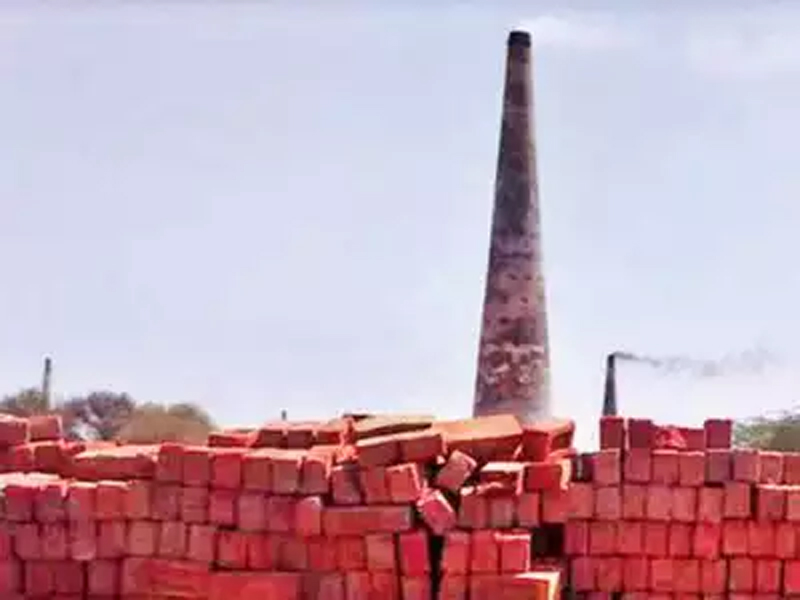All 560 brick kilns situated in the Union Territory of Jammu and Kashmir are slated for conversion to the Supreme Court-endorsed Zig-Zag technology by February 2025. Simultaneously, within a 10-kilometre radius of the non-attainment cities of Jammu and Srinagar, brick kilns devoid of this technology will face prohibition from operating beyond February of the current year. The integration of Zig-Zag technology within the brick kiln industry is poised to mitigate the deleterious emissions of particulate matter and gaseous pollutants. Moreover, it promises to enhance the sector’s operational efficiency, curtail expenses for proprietors, and safeguard the well-being of labourers.
Undoubtedly, the contemporary environmental predicament starkly contrasts with that of preceding decades, wherein urban sprawl burgeoned exponentially amid an incessantly expanding population bubble. In ancient times, the antiquated brick kilns in Jammu and Kashmir existed in isolation outside urban precincts, devoid of proximate habitation. However, this paradigm has undergone a radical shift, rendering these brick kilns integral components of burgeoning urban zones, now surrounded by densely populated colonies. The present scenario is disconcertingly alarming, given the persistence of outdated brick manufacturing methodologies. The utilisation of coal and firewood as fuel, coupled with the operation of old and inefficient brick kilns, engenders an egregious influx of pollution in the form of noxious smoke and particulate matter. Compounding this predicament is the relentless construction spree manifesting in the development of highways, flyovers, and smart city initiatives. Consequently, there is a perennially elevated air quality index (AQI) in the vicinity of cities. Within this context, it is imperative to acknowledge that out of the 560 sanctioned brick kilns, merely 201 have embraced the Supreme Court-endorsed Zig-Zag technology. The remaining entities persist in adhering to archaic practices, exacerbated by the continued use of coal and firewood in the absence of piped natural gas (PNG) as a more environmentally benign fuel source. These half-hearted mitigation endeavours are manifestly insufficient to effect the desired environmental amelioration.
The regulatory authorities must diligently explore ecologically sustainable alternatives, emulating practices efficaciously implemented in disparate regions of the country. The administrative apparatus must meticulously scrutinise all facets, precluding any inadvertent dearth of bricks while devising an immediate alternative scheme before the imminent imposition of a 10-kilometre radius buffer zone by February 2024. In a milieu where technological paradigms are in a state of flux, the Union Territory of Jammu and Kashmir is obliged to assimilate and expeditiously implement the latest advancements. Governmental facilitation, such as subsidies or preferential loans at reduced interest rates, should be extended to all brick kiln proprietors to facilitate the expeditious adoption of contemporary technologies. The pervasive health ramifications inflicted upon the local populace by extant pollution levels cannot be trifled with and must be accorded paramount consideration.
Even after the adoption of novel technologies, vigilant and recurrent inspections are imperative to ensure steadfast compliance. In tandem with technological upgrades, the provision of PNG to antiquated brick kilns should be a concomitant consideration. The delicate equilibrium between environmental imperatives and the preservation of an unimpeded supply chain must be meticulously sustained. A shortfall in brick production is poised to precipitate an inflationary surge, an eventuality that must be pre-emptively averted.
The National Green Tribunal (NGT) has unambiguously embraced an uncompromising stance on environmental concerns. Repeatedly, both the NGT and the judiciary have interceded, imposing severe penalties on environmentally deleterious industries, including the stone-crushing sector. Bricks, integral to construction endeavours, particularly in residential structures, necessitate a profound reassessment. Authorities must diligently investigate substitutes for traditional bricks and disseminate information to the public regarding such avant-garde materials and methodologies. The exigencies of environmental consciousness demand an unswerving and perpetual monitoring paradigm. Novel construction materials and techniques warrant thorough exploration and expeditious implementation. This critical matter mandates the undivided attention of the authorities, with due regard for meticulous consideration.


